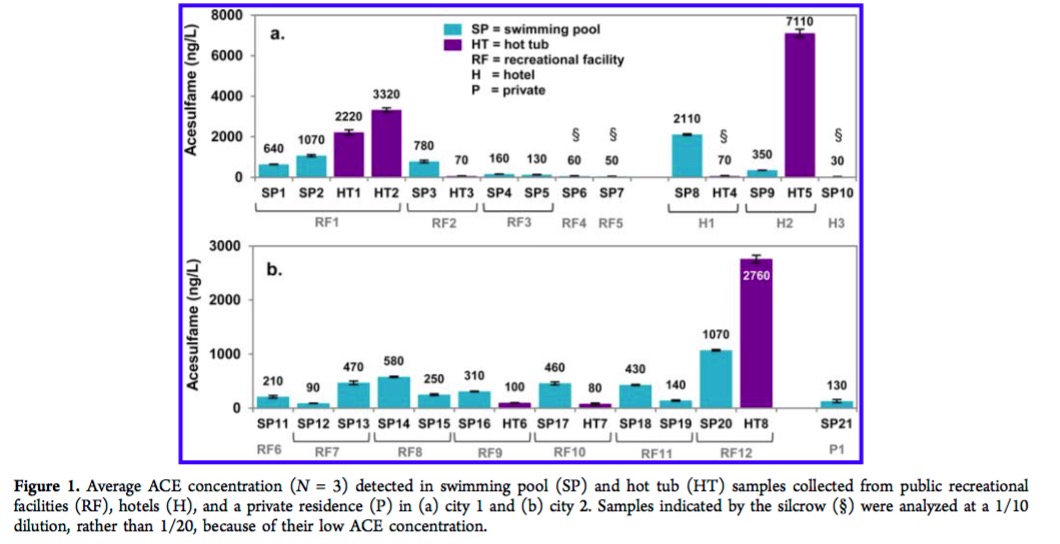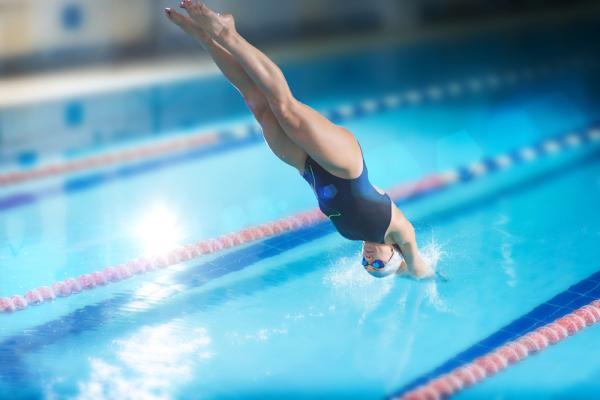Chlorine has been vilified as being dangerous to human health. In fact, though, it’s of great importance in promoting people's health. Not only is chlorination of drinking water one of the great public health accomplishments, preventing the transmission of cholera, for example, it is also important to maintain the healthfulness of recreational facilities — e.g. swimming pools. Just how important was demonstrated by a recent report in Environmental Science & Technology Letters.
Dr. Lindsay K. Jmaiff Blackstock from the University of Alberta in Canada and colleagues developed a new method of measuring the level of the artificial sweetener Acesulfame-Potassium (ACE) in water, which is widely used in a variety of foods and beverages. When consumed, ACE is absorbed into the blood but isn’t metabolized — instead, it’s nearly completely excreted in the urine. So you can be pretty sure that if you find ACE in a non-wild body of water, it got there from human urine.

(Yellow: oxygen; Red: carbon; Dark Blue: hydrogen; Green: nitrogen; Purple: sulfur; Light Blue: potassium)
ACE; courtesy of Shutterstock
Dr. Blackstock and colleagues tested water from swimming pools and hot tubs in two Canadian cities to determine the presence or absence of ACE. They also tested the ACE levels in tap water in each city as that was the source for the pools and hot tubs.
While the investigators found virtually no ACE in the tap water from either city, the swimming pools and hot tubs varied widely in the amounts of ACE detected, as shown in the chart below. The hot tubs typically had much higher concentrations than did the pools — likely because of their smaller size and heavier use, as shown below.

Source: Blackstock, LKJ et al. Sweetened Swimming Pools, and Hot Tubs. Environ. Sci. Technol. Lett., 2017, 4 (4), pp 149–153
When the chlorine in a body of water reacts with nitrogen-containing compounds such as the urea, ammonia, amino acids and creatinine found in human urine, many by- products are formed. Some of these are volatile — they escape from the water into the surrounding air where they can irritate eyes and nasal passages. And of course, bacteria in the water, which also contain nitrogenous compounds, will be killed.
So if the water were heavily contaminated with nitrogenous compounds — from urine, bacteria or other sources — the chlorine could actually get “used up.” Of course one would not expect this to happen in a properly maintained pool or hot tub where chlorine levels are carefully monitored and controlled. This new test for ACE, however, can provide a novel means of checking to see whether users are adhering to good hygienic practices or not.
SaveSave




